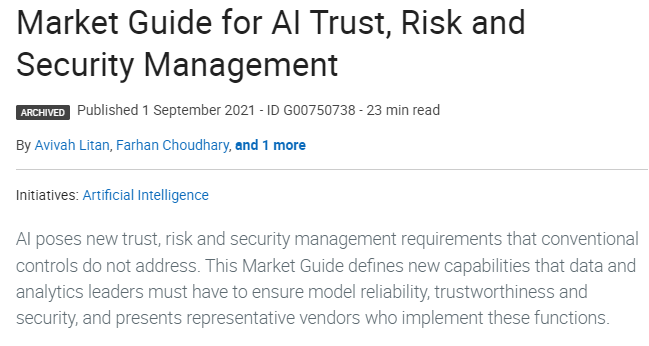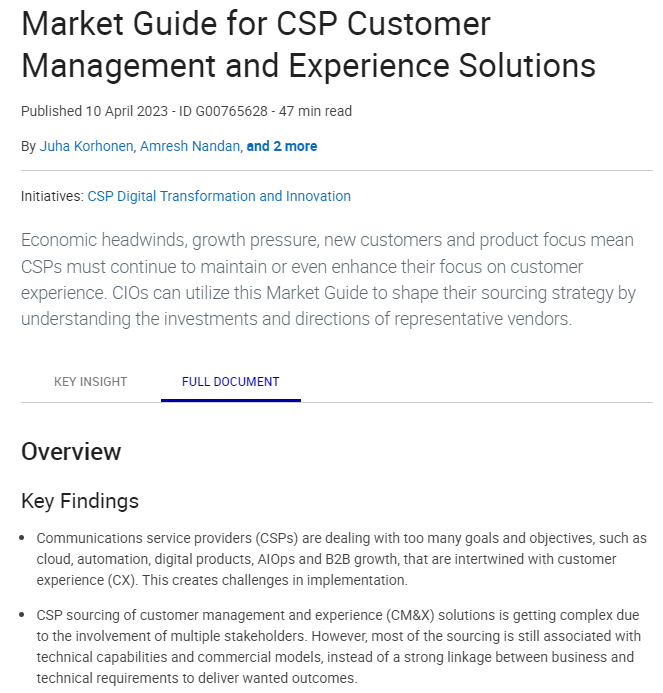The DevOps Revolution: Harnessing DevOps and CI/CD for Maximum Agility and Scalability
The DevOps Revolution: Harnessing DevOps and CI/CD for Maximum Agility and Scalability
DevOps is becoming a major force in this new era of digital transformation, with the adoption of digital technologies in all aspects of businesses. In a recent market study, the DevOps market is expected to grow to $51B by the year 2030 which is a significant 24% CAGR when compared to where we are today at approximately $9B.
In today’s challenging times, CIOs are keen to achieve higher levels of ROI through Digital Transformation Initiatives. The three pillars on which they are measured for maximum return on investment, include Business, Technology and Operations. Digital transformation meets the rapidly changing market demands by harnessing technologies effectively, and DevOps is the convergence of development and operations that assists businesses in achieving IT transformation in the digital era. It has a corporate impact through changing organizational culture, reducing negative silos, and setting the way for rapid measurable ROI and progress in efficiencies responsiveness, and effectiveness of the IT organization to business demands. DevOps and Continuous Integration/Continuous Deployment (CI/CD) enable organizations to save costs and improve the stability of cloud-native apps by accelerating development and deployment cycles and responding just in time to critical business needs.
DevOps Impact on Business, Technology, and Operations
The Digital Transformation process involves the implementation of three Digital Pillars that provide value to the business, technology, and operations. Similarly, DevOps adds value to these areas, making it critical for CSPs to incorporate DevOps practices into their business environment. DevOps relies heavily on Continuous Integration/Continuous Deployment (CI/CD). They are a set of practices and tools that automate the process of integrating code changes into a shared repository - Continuous Integration - and deploying the programme to production environments - Continuous Deployment - in a speedy and dependable, and manner.
CI/CD ensures that changes are thoroughly tested and validated before deployment, lowering the chance of introducing errors or vulnerabilities into the production environment. DevOps assists in overcoming the challenges of departmental misunderstanding by assisting with automated platform shifts meant to give increased business values and responsiveness. The framework includes CI/CD, which is a continuous process of development and deployment to ensure a smooth workflow.
DevOps provides business benefits through accelerating time-to-market, boosting revenue, improving customer satisfaction, and delivering a competitive advantage to many facets of an organization. It adds value to technology by improving software quality, efficiency, scalability, innovation, and security. Reduced downtime, optimized resource management, operational resilience, improved processes, increased collaboration, and data-driven insights all contribute to the value of operations.
Business Agility Challenges for CSPs and Their DevOps Expectations
When it comes to attaining business agility, CSPs confront various hurdles, particularly in their capacity to quickly adjust to changing market conditions, client needs, and technological advances. In order to meet these needs, they must have a streamlined and tightened process of continuous integration and delivery.
CSPs must frequently build comprehensive plans that include technology transformation, organizational change, and a commitment to remaining responsive to market dynamics and customer needs in order to overcome these hurdles and achieve business agility. This could include a combination of new technology investments, operational enhancements, and a cultural shift toward agility and creativity. CSPs have unique DevOps expectations as they strive to increase operational efficiency, improve service delivery, and remain competitive in a rapidly changing market.
CSPs anticipate that DevOps will play a critical role in their attempts to modernize their operations, speed service delivery, improve quality and security, and remain competitive in a rapidly evolving industry. Meeting these expectations frequently necessitates a cultural transformation, investment in automation, and a commitment to continuous development.
Enhanced Automation with AIML
Improved automation is one of the primary developments of Artificial Intelligence (AI) in DevOps. This evolution is based on the idea of employing artificial intelligence to automate additional operations within the DevOps pipeline, boosting productivity and decreasing manual workload.
The use of AI and machine learning (ML) in DevOps will increase in automated testing, continuous deployment, and monitoring. DevOps teams can use these technologies to optimise and automate procedures, increasing the productivity of software development. Issues can be identified and corrected in real time with AI-powered testing solutions, minimising the requirement for manual testing: ML algorithms can analyse code changes, predict conflicts, and offer improvements to code quality. They can also monitor application performance, detect anomalies, and improve user experience. Artificial intelligence-powered deployment technologies can also detect and avoid deployment issues before they occur.
DevOps has always emphasised automation, but AI offers something extra by enabling smarter automation. Artificial intelligence can be used to make complex decisions such as resource optimisation, workload management, and automatic error correction. This intelligent automation capability liberates DevOps teams from repetitive and time-consuming tasks, allowing them to focus on more strategic and creative elements of their job.
DevSecOps
With security being one of the most pressing concerns in the digital age, especially as we move more towards the consumption of public cloud applications and data, businesses will need to incorporate the DevSecOps lifecycle to ensure a comprehensive and automated security approach that can aid in the detection and remediation of vulnerabilities early in the development process.
According to the most recent DevSecOps trends, approximately 40% of Enterprises perform the Dynamic Application Security Testing (DAST) test, 50% perform the Static Application Security Testing (SAST) test, and the remainder scan dependencies and containers. DevSecOps is predicted to continue rising in popularity as more organisations recognise the need to incorporate security into their development processes.
DevSecOps will most certainly become further integrated with other new technologies, like as machine learning and artificial intelligence, to improve security and automation even more. As a result of implementing DevSecOps, developers may expect to increase security while also boosting the efficiency and agility of their software development and delivery.
Serverless and Cloud-Native Architectures
Serverless computing is a way of developing and running services and applications without the use of servers. These programmes do not require server management because they are designed in this manner from the beginning. It has become a popular creative technique for software deployment over the years. In fact, by 2030, the serverless market is expected to be worth $30 billion. Furthermore, more than half of enterprises with cloud-based courses have serverless computing integrated into their systems.
The serverless computing approach has considerably aided the DevOps process. It has successfully bridged the gap between development and operations with increased operability. It also aided in the generation of DevOps pipeline code without the requirement for the host to build, test, and deploy.
Serverless and cloud-native architectures are becoming more popular. DevOps practices are being expanded to manage and deploy serverless technologies, microservices, and containers, which provide enhanced scalability and flexibility: Cloud-native technologies have transformed how applications are designed, deployed, and scaled. The most popular technologies driving this movement are Kubernetes, Docker, and serverless computing. These technologies allow DevOps teams to build and deploy applications more quickly and efficiently.
Low-code Applications
Low-code applications are having a significant impact on the future of DevOps. The term 'low code' implies putting less focus on coding, whereas DevOps implies effective teamwork, as a result, combining the two is bound to improve development and deployment.
To manage the app development process, powerful technologies that require little to no formal software development training/coding expertise or experience are being deployed. It allows users to construct their logic and workflow simply by dragging and dropping elements, speeding up the development and deployment process by generating simple and user-friendly applications. It enables the development of prototypes or POCs (proof of concepts) that enable innovation. The low-code strategy fosters agility, giving every organization a significant competitive advantage in the demanding and fast-paced software market.
Many programming tools have helped with crucial DevOps practices like version control, built-in-quality, and even build validation. The single-platform strategy of this trend, which has supplied a "no" or a "low" code, has also greatly helped DevOps teams reduce complexity and work more effectively.
In Conclusion
Agility in business operations and expectations include but are not limited to increased customer satisfaction and engagement through innovation in the digital experience, specifically in their ability to quickly adapt to changing market conditions, customer demands, and technological advancements. In technology advancement, they ask for continuous innovation with centers of excellence in areas such as AIML, digital marketing, and customer engagement along with heightened quality and security. In operations, it’s all toward service excellence through improved collaborations.
With more DevOps trends emerging to improve operational efficiency, it is more likely that it will transcend beyond automation in the future to service excellence and increased market impact. Rising DevOps trends are more focused on the framework's continual innovation for better user results. What is even more significant is that DevOps is a partnership between technology and business that ensures products and services are delivered on time, at a lower capital & operational cost while guaranteeing significant customer impact.
ABOUT THE AUTHOR

Padma Ravichander
CEO, Tecnotree
Padma Ravichander is the Chief Executive Officer at Tecnotree OYJ. She is responsible for managing and developing the company's operations, along with responsibilities such as investor relations, corporate communication, long-term strategic and financial planning, as well as major operative decisions and the supervision of their implementation. With a master’s degree in ‘Global Leadership and Strategic Planning’ from Stanford University, California, and a ‘Diploma in Computer Science’ from Concordia University, Canada, she comes with impeccable industry experience of almost four decades.



















